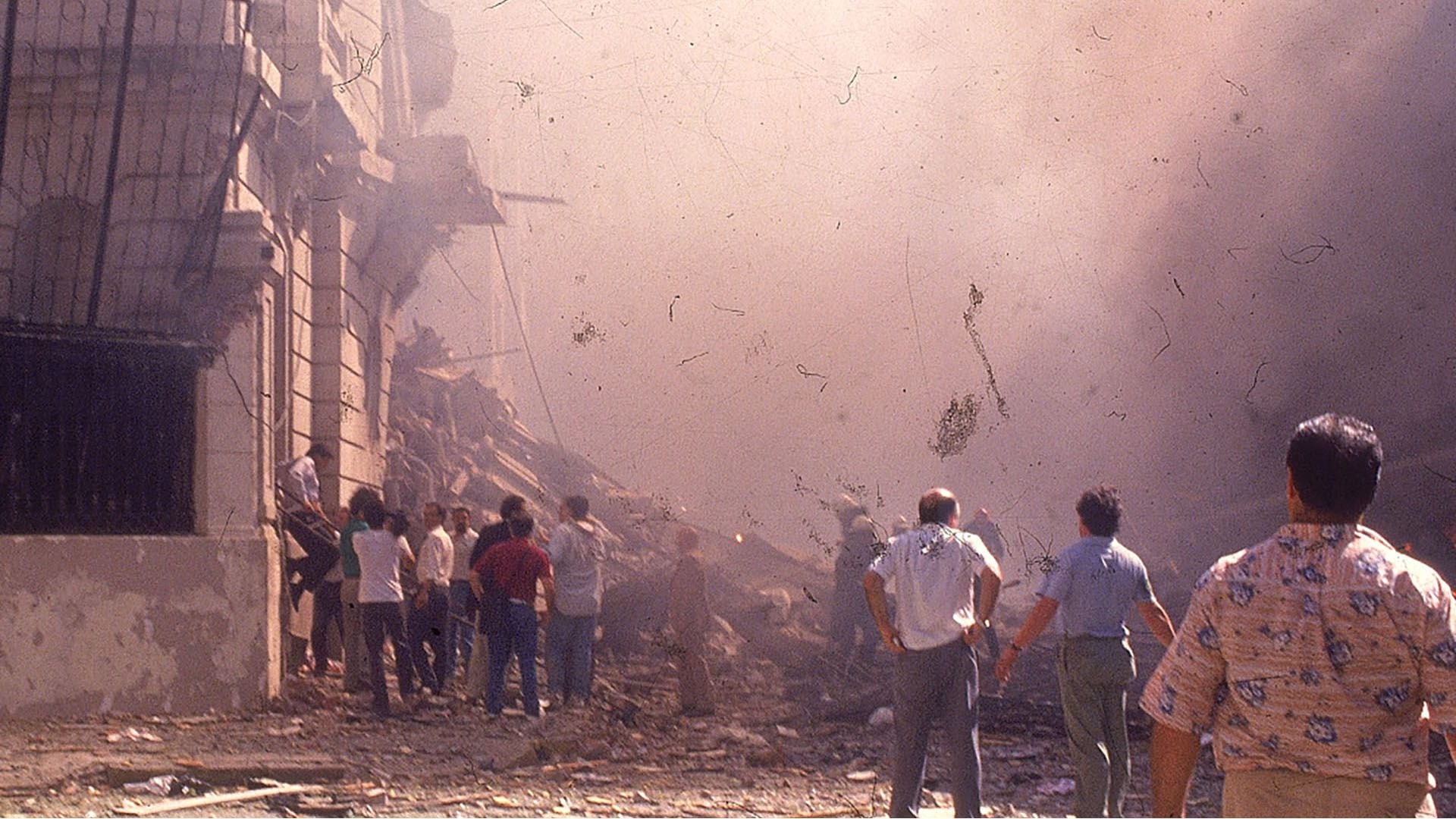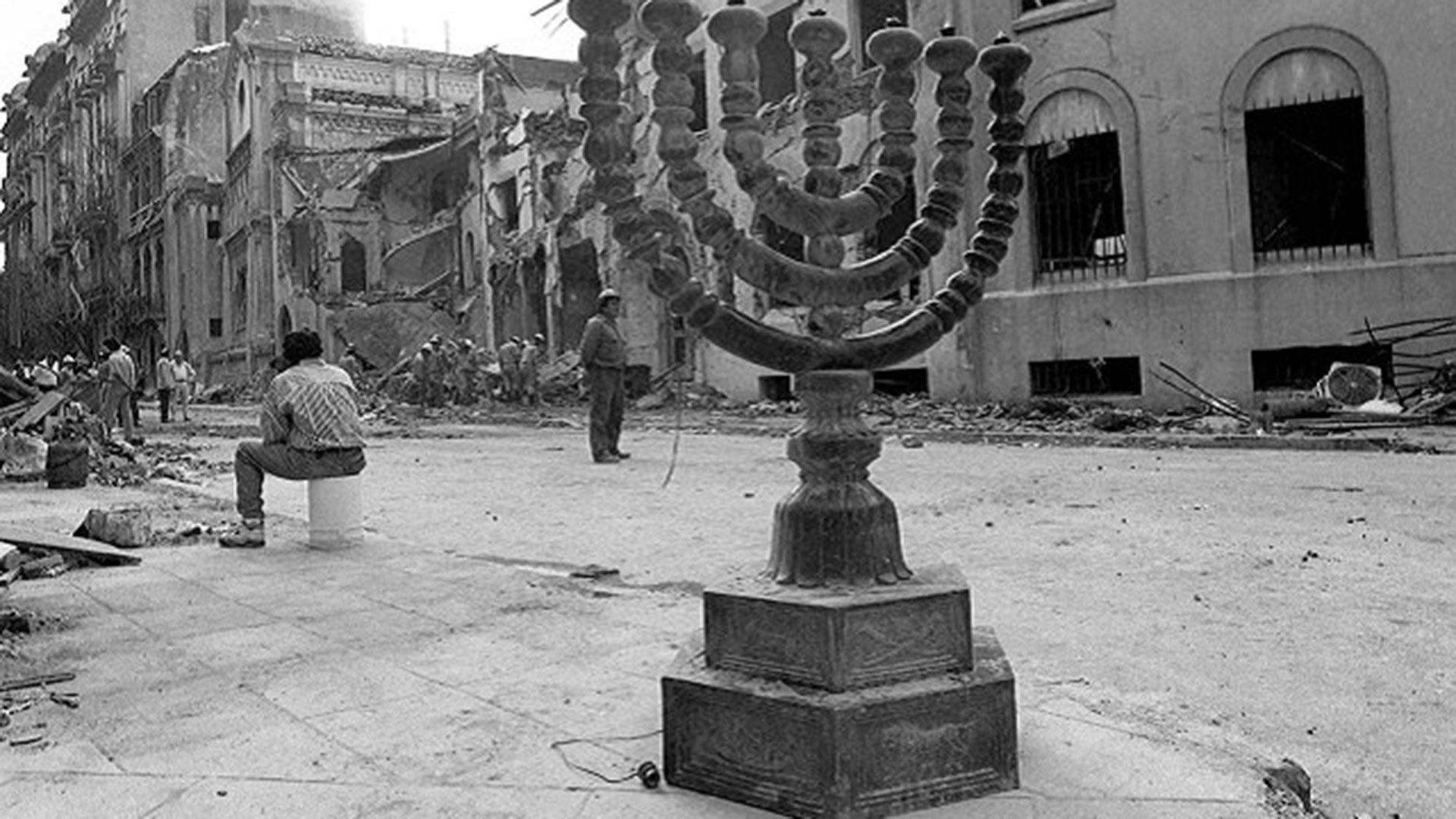
At 14 March 17, 1992, in Buenos Aires, there was no reason to believe that it was a day different from any other. But at 14.45 everything changed. A suicide bomber, aboard a Ford F-100 van full of explosives, crashed his vehicle into the front of the Israeli embassy building, located in Arroyo and Suipacha.
Within seconds, the city was in chaos. There were injuries, debris, screams. As is often the case, confusion rules the rhythm no longer of the block where the attack occurred, but also of the city. In addition to the wounded visible to the naked eye, it was guessed that the number of fatalities would soon be overwhelming. The scene was completed with sirens of police, firefighters and ambulances who immediately arrived at the scene. For the first time in its history, Argentina was a victim of international terrorism.
In addition to the embassy staff, there were occasional casualties. Older adults who lived in the nursing home opposite, masons who worked on the site, boys and girls from a kindergarten and others who passed by that place at that time.

The Mater Admirabilis parish and dozens of neighboring houses were obliquely hit by the attack.
In total, the fatalities amounted to 29, and the injured were 242. Some people today read the attack on the Israeli embassy as a piece connected to the attack on AMIA, perpetrated two years later, in 1994.
WHERE ARE THE CULPRITS OF THE ATTACK?
That day and at that time there was only confusion, although today, 30 years later, there are not many more certainties. With the passing of the hours of that day, different versions began to circulate.
The President of the Nation, Carlos Saúl Menem, assured that the fact responded to remnants of Nazism that still remained in the world, but that did not express the general feeling of Argentine society.
For their part, the Israeli authorities began to follow the clues of a connection between Syria and Iran. Some time later, Islamic Jihad, a Lebanese armed organization linked to the fundamentalist terrorist group Hezbollah, claimed responsibility for the attack and explained that its purpose was to strike Israeli interests anywhere in the world.
On 16 February 1992, a month before the attack, the Secretary General of Hezbollah, Abbas Musawi, had been assassinated in Lebanon. At that time, Israel maintained its military presence in southern Lebanon since the end of the civil war in that country.
INVESTIGATION OF THE ATTACK, THIRTY YEARS LATER
In order to determine what happened on 17 March 1992, three investigations were carried out. One by the Israeli Mossad, another by the FBI and the third, the judicial case in Argentina, by the Supreme Court of Justice. In the case documents, it was proved that the explosion was caused by a charge of pentrite and trinitrotoluene, which had been conditioned in the rear right of the interior of the van.
But, owing to lost evidence, delays and mismanagement, the perpetrators remain unpunished.

The toughest versions pointed to Imad Fayez Mughniyah, leader of Hezbollah's foreign security apparatus, as one of the main perpetrators of the attack. Mughniyah would die in February 2008, in a car bomb attack in Damascus, the capital of Syria.
The Justice pointed to two other suspects: Lebanese Hussein Mohamad Ibrahim Suleiman and Lebanese-born Colombian José Salman El Reda, on whom calls for international arrest weigh. The first, because of its alleged responsibility for the entry of explosives into our country, and the second, as the financial arm of the attack.
However, despite the 30 years since the crime occurred, progress in the investigation was not satisfactory. The names of the deceased remain inscribed in the embassy square, waiting for the attack to be clarified and, finally, justice will be served.
KEEP READING:
Últimas Noticias
Debanhi Escobar: they secured the motel where she was found lifeless in a cistern

The oldest person in the world died at the age of 119

Macabre find in CDMX: they left a body bagged and tied in a taxi
The eagles of America will face Manchester City in a duel of legends. Here are the details

Why is it good to bring dogs out to know the world when they are puppies



